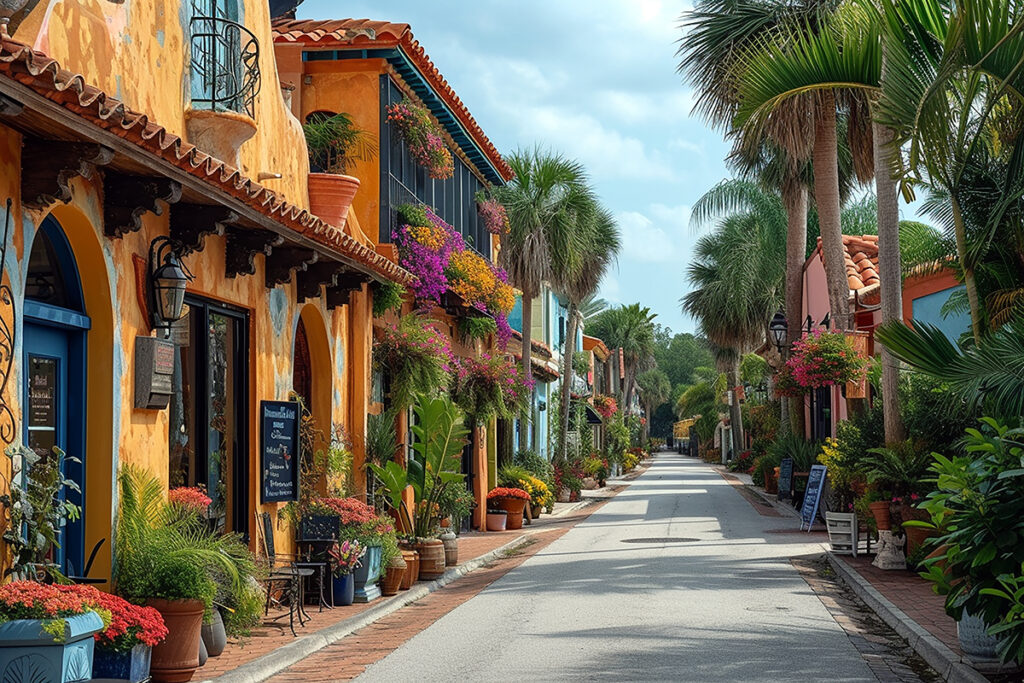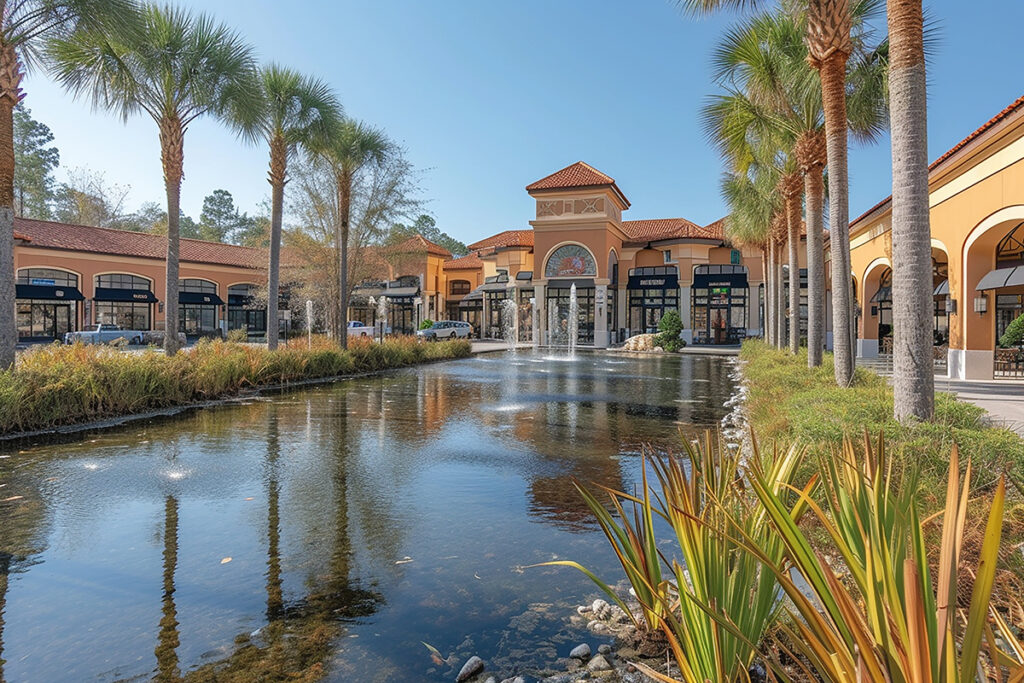
At the heart of digital marketing for local businesses lies an essential strategy: Local SEO. This specialized branch of search engine optimization focuses on optimizing a business’s online presence to attract more customers from relevant local searches. Unlike standard SEO, which operates on a global scale, local search engine optimization zeroes in on elevating your visibility within your specific geographic area, making your business more accessible and prominent to the local community and visitors.
The Components of Local SEO
- Google Business Profile Optimization: Your Google Business profile is the cornerstone of Local SEO. It’s how your business appears in Google Maps and local search results. Regularly updating your Google Business profile with accurate information, engaging photos, and customer reviews can significantly boost your local search visibility.
- Local Keywords and Content: Incorporating local keywords—such as city or neighborhood names—into your website’s content and metadata is essential. It helps search engines understand where your business is located and what local market it serves.
- Building Local Backlinks: Backlinks from other local businesses and organizations can strengthen your website’s local SEO. These local links signal to search engines that your business is an established part of the local community.
- Online Reviews and Reputation Management: Online reviews, especially on your GMB profile, play a pivotal role in local search rankings and customer trust. Actively managing and responding to customer reviews, both positive and negative, can enhance your reputation and SEO.
- Mobile Optimization: With more local searches happening on mobile devices, having a mobile-friendly website is vital for Local SEO. It ensures a seamless browsing experience for users on-the-go, which is often when local searches are performed.
Why Local SEO Matters
Local SEO is crucial for businesses that rely on local customers, such as brick-and-mortar stores, service providers, and regional companies. It involves tactics like optimizing your Google Business profile listing, ensuring your business appears in local search results, and tailoring your website content with local keywords and location-specific information. The goal is to appear at the top of search results when potential customers in your area search for products or services you offer.
- Boosted Local Visibility: Imagine your business popping up first when locals search for your services. Local SEO catapults your brand to the top of search results in your community, making it the go-to choice for nearby customers. It’s like having a digital billboard in the busiest part of town, but even better.
- Increased Foot Traffic and In-Store Visits: Local SEO is like a friendly guide leading potential customers straight to your doorstep. By appearing in local searches, you’re more likely to attract people who are already out and about, looking for what you offer. It’s a direct path from their smartphone screens to your physical location.
- Enhanced Relevance and Targeted Reach: Tailoring your SEO to the local crowd means your content resonates more deeply with their needs and interests. It’s about striking a chord with the community by showcasing how your business fits into their local lifestyle and culture.
- Greater Trust and Credibility: When your business appears in local searches, especially with positive reviews and a robust Google My Business profile, it builds trust. People tend to favor businesses that their community endorses. It’s like having a neighbor vouch for you at every opportunity.
- Competitive Edge in Your Market: With Local SEO, you’re not just on the digital map, you’re a local landmark. It puts you ahead of competitors who haven’t quite caught on, giving you a prime spot in the local market. You’re not just playing the game; you’re leading it.
- Improved User Experience and Engagement: Local SEO isn’t just about being found; it’s about offering a seamless experience once customers find you. From easy-to-navigate websites to content that speaks their language, it’s all about making every interaction with your business a local delight.
- Cost-Effective Marketing: Compared to traditional advertising, Local SEO is a highly cost-effective way to market your business. Instead of casting a wide net and hoping for the best, you’re fishing in a well-stocked pond where the fish are already biting.
- Insightful Analytics for Smarter Strategies: The data you glean from your Local SEO efforts offers invaluable insights into customer behavior and preferences. It’s like having a crystal ball that shows what your local customers want and how they interact with your business online.
- Adaptability to Market Changes: Local SEO keeps you agile. As the local market and consumer trends shift, you can quickly adapt your strategies to stay relevant and appealing. It’s like being a chameleon, always able to blend in with the evolving local landscape.
- Building a Loyal Local Community: Beyond the clicks and conversions, Local SEO helps in nurturing a loyal community around your brand. When locals turn to you for their needs, you’re not just a business; you become a valued part of their daily lives.
Embracing Local SEO means you’re not just doing business in the community; you’re becoming an integral part of it. It’s about creating connections that go beyond transactions, fostering relationships that build the foundation for lasting success and community presence.

Local SEO in Action: Real-World Impact
Implementing Local SEO can transform your business’s digital presence. For example, a local bakery that optimizes its website for Local SEO can appear at the top of search results when someone nearby searches for “best dentist in Clearwater, Florida” leading to increased foot traffic and online orders.

Challenges and Evolving Trends in Local SEO
Staying current with Local SEO practices is challenging but essential. Search engines continually update their local search algorithms, and user behavior evolves, especially as new technologies emerge. Keeping up with these changes and continuously refining your Local SEO strategies is key to maintaining a competitive edge.
Top Local SEO Challenges for Business Owners
- Keeping Up with Constant Algorithm Changes: Staying afloat in the ever-changing sea of Google’s algorithm updates is like trying to hit a moving target. These updates can suddenly shift what’s important in local search rankings, leaving business owners scrambling to adapt their SEO strategies.
- Balancing Broad and Local Keywords: Finding the sweet spot between popular keywords and those specific to your local area can be like walking a tightrope. It’s a balancing act to ensure your content appeals to a local audience without missing out on broader search terms.
- Managing Online Reviews and Reputation: Keeping up with and responding to online reviews is akin to hosting a never-ending digital town hall meeting. Reviews greatly impact local SEO and customer trust, but managing them can be time-consuming and requires a thoughtful, consistent approach.
- Ensuring NAP Consistency Across the Web: Making sure your business’s Name, Address, and Phone Number (NAP) are consistent across all online platforms is like playing a high-stakes game of Whack-a-Mole. Inaccuracies or discrepancies can confuse both search engines and potential customers, harming your local SEO.
- Competing with Larger Businesses: For small local businesses, trying to outshine larger competitors in search engine rankings can feel like a David vs. Goliath battle. Bigger companies often have more resources to pour into their SEO efforts, making it a challenge for smaller businesses to stand out.
- Optimizing for Mobile and Local Searches: With more people using smartphones to find local businesses, ensuring your website is mobile-friendly is crucial. It’s like making sure your digital storefront is just as inviting and accessible as your physical one.
- Creating Locally Relevant Content: Crafting content that resonates with a local audience requires a deep understanding of the community. It’s about more than just adding location-based keywords; it’s about creating content that speaks to local interests, culture, and events.
- Building Quality Local Backlinks: Establishing a network of local backlinks is like growing a garden – it takes time, effort, and nurturing. Getting other reputable local businesses and organizations to link to your site can significantly boost your local SEO but requires building strong community relationships.
- Understanding Local Customer Behavior: Deciphering the search habits and preferences of your local customer base can be as complex as solving a puzzle. Local SEO demands a keen understanding of how your community uses the internet to search for products and services like yours.
- Measuring and Analyzing Local SEO Success: Determining the effectiveness of your local SEO efforts involves wading through a sea of data and analytics. It can be challenging to pinpoint which metrics matter most and how to interpret them to inform your future strategies.
Navigating these challenges requires a blend of SEO savvy, local market knowledge, and a dash of creativity. Overcoming them doesn’t just improve your search rankings; it strengthens your connection with your local community and lays the groundwork for sustained business growth.

Embracing the Power of Local SEO
Local search engine optimization is more than a marketing tactic; it’s a long-term investment in your business’s digital footprint. Whether you’re a small local shop or a larger regional operation, mastering Local SEO can open doors to increased visibility, customer engagement, and business growth. Understanding and implementing Local SEO effectively is your first step towards becoming a household name in your community.
Top 10 Reasons Business Owners Should Harness the Power of Local SEO
- Become the Go-To Local Authority: Imagine being the first name that pops up when locals search for your industry. Embracing Local SEO can position your business as the leading authority in your area, the first choice for local customers seeking your products or services.
- Connect with the Community on a Deeper Level: Local SEO isn’t just about visibility; it’s about community engagement. Use it to tailor your content and offerings to local events, traditions, and news, creating a deeper connection with your audience. It’s like being part of the neighborhood conversation.
- Drive Geo-Specific Traffic to Your Site: With Local SEO, you can attract website visitors who are not just browsing but are actively looking for what you offer in their area. It’s like having a beacon that guides potential customers right to your digital doorstep.
- Boost In-Store Traffic Through Online Searches: Leverage Local SEO to turn online searches into foot traffic. When locals find you online and see you’re just around the corner, they’re more likely to drop by. Think of it as creating a virtual path leading to your physical location.
- Stand Out in a Competitive Market: In a sea of competitors, Local SEO helps your business stand out. It gives you a competitive edge by ensuring that your business appears prominently in local searches, making it easier for customers to choose you over others.
- Capitalize on Mobile Search Trends: As more people use mobile devices for local searches, optimizing for Local SEO means you’re right there when they need you. It’s about being accessible in the moment, right in the palm of their hands.
- Tailor Your Marketing to Local Demographics: Local SEO allows you to customize your marketing efforts to match the specific preferences and needs of your local market. This tailored approach can lead to more effective marketing, resonating more strongly with your target audience.
- Gain Insights from Local Feedback: Use Local SEO tools to gather and analyze feedback from your local customers. This feedback is a goldmine of insights, helping you fine-tune your offerings and customer service to better meet the needs of your community.
- Increase Trust Through Localized Branding: Local SEO can enhance your brand’s trustworthiness. Customers often trust local businesses more, and appearing in local search results can add to your credibility and relatability.
- Optimize Marketing Costs with Targeted Strategies: Instead of casting a wide, generic net, Local SEO lets you focus your marketing efforts where they count the most. This targeted approach can lead to more efficient use of your marketing budget, with potentially higher returns on investment.
By embracing the power of Local SEO, business owners can not only improve their search engine rankings but also foster a stronger, more meaningful connection with their local communities. It’s about transforming your business from just another option to a local household name.

Ready to elevate your business with Local SEO but not sure where to start? Our SEO Consulting Experts specializes in crafting customized Local SEO strategies that align with your business goals and local market. Contact SEO Consulting Experts today for a consultation and let us help you navigate the path to local digital success.

